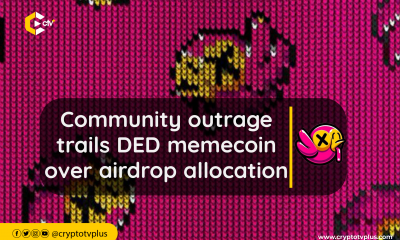FEATURED
Snowfork presents Snowbridge; a cross-chain bridge for Polkadot-Ethereum

Following the Web3 Foundation grant in 2021, Snowbridge was launched as a web3 bridge on the Ethereum network.
Two years later, it has evolved to become an important infrastructure that connects Ethereum and Polkadot, enhancing interoperability between the two networks.
According to Vincent Geddes, the Technical Lead of Snowfork, the developer of Snowbridge, the bridge started as a product that included live clients for Ethereum’s proof-of-work consensus and a prototype of the Beefy protocol.
However, it has undergone several transformations to meet the demands of the industry.
Challenges faced
First, he noted that during the Ethereum 2.0 upgrade, also known as “the merge”, the team had to change intrinsic aspects of Snowbridge, specifically the Snowbridge’s Ethereum client.
Additionally, he noted that the team encountered challenges related to implementing consensus mechanisms. Consensus mechanisms are the protocols that ensure all participants in a network agree on the state of the system.
These mechanisms can be complex to design and implement, and it seems the team had to address issues or difficulties related to this aspect of their project.
The team also had to decide how to fund their project. They had two main options: VC (Venture Capital) funding or public treasury funding.
VC funding typically involves private investment from venture capitalists, while public treasury funding might involve raising funds from the broader public, possibly through token sales or community contributions.
Bridge Hub and decentralized cross-chain governance
Despite facing difficulties and challenges, there was a significant turning point in the project’s development. This turning point was marked by the introduction of two key elements: Bridge Hub and XCMv3.
The Bridge Hub project is designed to enable collectives such as the Alliance and Fellowship to serve both networks with ease and allow Kusama to actively participate and act as a unified entity within these groups or the Polkadot network as a whole.
XCMv3 is a protocol used in the Polkadot ecosystem to facilitate cross-chain communication and enable cross-chain interoperability.
It is the third version of the Cross-Chain Message (XCM) protocol and is designed to break new ground for Web3 interoperability.
XCMv3 introduces advanced programmability, bridging capabilities with external networks, cross-chain locking, improved fee payment mechanisms, and more.
He highlighted the advantages of launching on Bridge Hub and the complexity of designing decentralized cross-chain governance.
Decentralization is a key aspect of Snowbridge, as it eliminates the reliance on centralized entities.
Snowbridge Architecture
The Technical Lead went further to explain Snowbridge’s architecture, mentioning its independent messaging channels between parachains and Ethereum.
This flexibility allows parachains to configure fee parameters and introduces “agents” on Ethereum for cross-chain authentication.
He added that fees and incentives connected to Snowbridge are charged in native tokens. An example is Ether for Ethereum users and DOT for Polkadot users.
This single fee covers the cost of execution on the destination network, simplifying the user experience.
Snowbridge’s governance is overseen by Polkadot’s community, ensuring there is no centralized control on the Ethereum side. The project plans to support ERC20 token transfers for interoperability.
Snowbridge aims to expand to arbitrary contract calls between parachains and Ethereum and add support for more native tokens in the future.
Another important aspect of Snowbridge mentioned in the presentation is the role of the Beefy light client for Ethereum, explaining its verification process, which includes checking randomly chosen validator signatures.
The Ethereum client for Snowbridge, on the other hand, verifies consensus updates from the Ethereum execution layer.
The beefy light client is a protocol designed to enable efficient bridging with non-Substrate-based chains, mainly Ethereum. It is used to make the syncing process and finality proof very succinct, allowing Ethereum on-chain light clients to be built.
The Beefy light client is optimized for restricted environments like Ethereum smart contracts or on-chain light clients
Future developments
As for the future, Snowbridge aims to add support for arbitrary contract calls between Polkadot parachains and Ethereum, further enhancing its functionality. The project also plans to support more native tokens from different parachains.
Read also; How to build user-friendly client applications for Substrate Networks
























